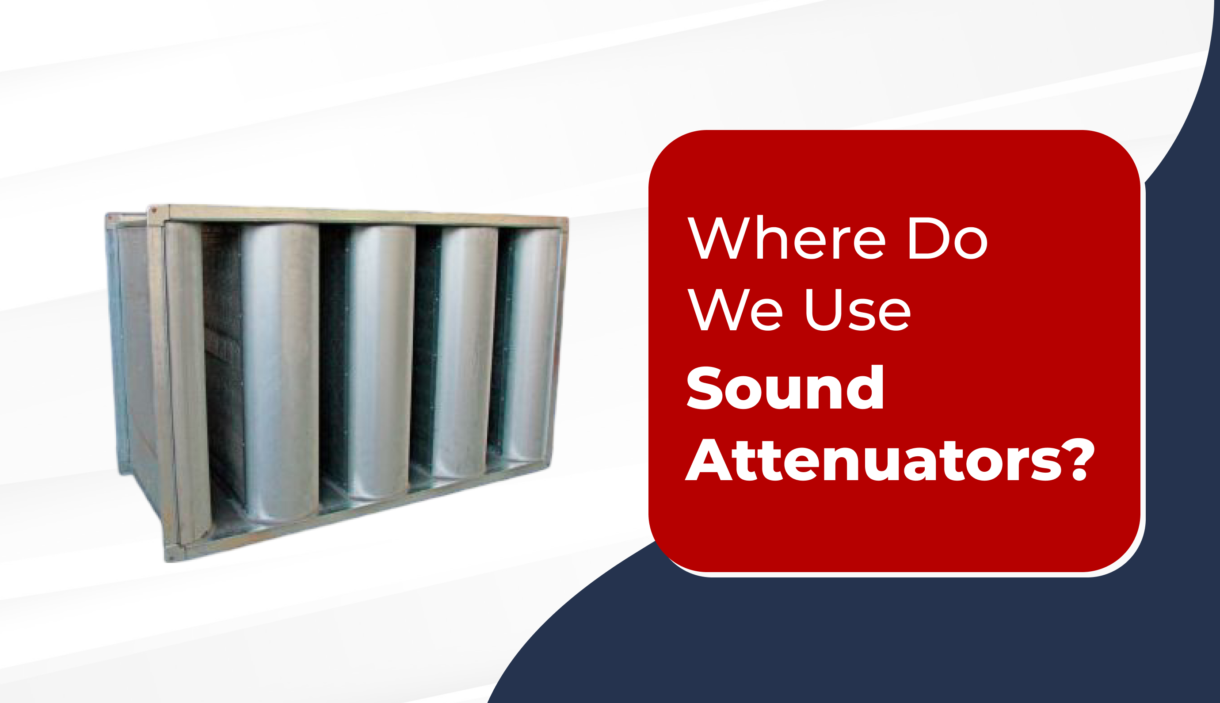Where Do We Use Sound Attenuators?
In today’s HVAC designs, managing air quality and temperature is important—but controlling noise is equally vital. The sound generated by mechanical systems like fans, blowers, and duct airflow can negatively impact indoor comfort, productivity, and health. Whether it’s a hospital, office, or auditorium, noisy HVAC systems can cause distractions and discomfort. That’s why sound attenuators—also known as duct silencers—are integrated into HVAC ductwork to reduce sound transmission without affecting air movement. At Air Master, we design and supply efficient, high-performance sound attenuators to meet the acoustic demands of various building types and applications.
Sources of HVAC Noise
Noise in HVAC systems originates from several sources, including:
- Fans and Blowers: High-speed operation generates broadband noise.
- Airflow Turbulence: Abrupt changes in duct direction create turbulence.
- Vibration Transmission: Mechanical vibrations from equipment can travel through ductwork.
- Terminal Devices: Grilles, diffusers, and dampers can restrict airflow and create whistling or hissing.
Identifying and isolating these sources is critical to selecting the right sound attenuator.
Common Applications of Sound Attenuators
- Hospitals & Healthcare
Ensure quiet environments for patient healing and doctor-patient interactions. - Offices & Workspaces
Improve focus and productivity by minimizing HVAC noise in work areas. - Educational Institutions
Maintain acoustic comfort in classrooms and libraries for better learning. - Theatres & Studios
Block mechanical noise to preserve high-quality audio and performances. - Hotels & Residences
Create premium, peaceful guest experiences by isolating system noise. - Data Centers & Labs
Support equipment performance with noise-free airflow and reduced vibration.
NC Curve Diagram
Understanding how HVAC sound levels affect comfort is key. The Noise Criterion (NC) Curve shows acceptable indoor noise levels across different frequency bands. Air Master silencers are designed to meet project-specific NC levels for optimal acoustic performance.
Software-Based Silencer Selection
Air Master utilizes advanced acoustic analysis software to select the ideal silencer for your system. By analyzing factors like airflow, duct size, and sound frequency, the software ensures accurate silencer sizing and performance to meet both acoustic and airflow goals. This technology-driven approach guarantees efficient noise control customized for every project.
Laboratory Testing as per ASTM/EN Standards
To guarantee performance and reliability, all Air Master silencers undergo rigorous testing in reputed laboratories. These tests are conducted in compliance with ASTM E477 and EN 477 standards, covering essential criteria such as insertion loss, pressure drop, and regenerated noise. Certified results confirm our products’ efficiency and quality.
Why Placement and Design Matter
Proper placement and design of sound attenuators directly impact their effectiveness. Factors such as airflow velocity, duct configuration, and proximity to noise sources must be considered. Partnering with Air Master ensures expert guidance in positioning and selection to maximize acoustic and ventilation performance.
Conclusion
Noise control in HVAC systems is no longer optional—it’s essential. With Air Master sound attenuators, you get performance-engineered, lab-tested solutions tailored to your building’s needs. From software-assisted selection to certified testing, we ensure your spaces remain comfortable, quiet, and efficient. Our commitment to quality, precision, and innovation helps you meet both acoustic and ventilation goals without compromise. Whether it’s a hospital, hotel, or high-tech lab, Air Master brings peace of mind—where silence meets smart design.



